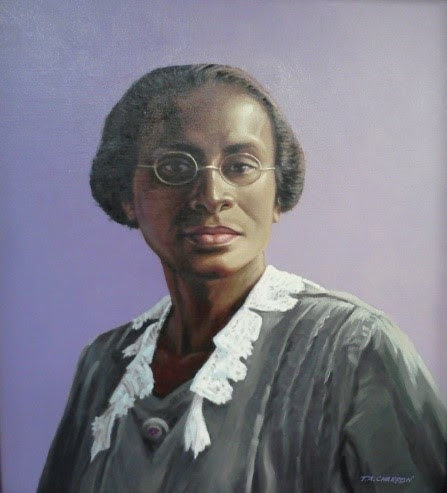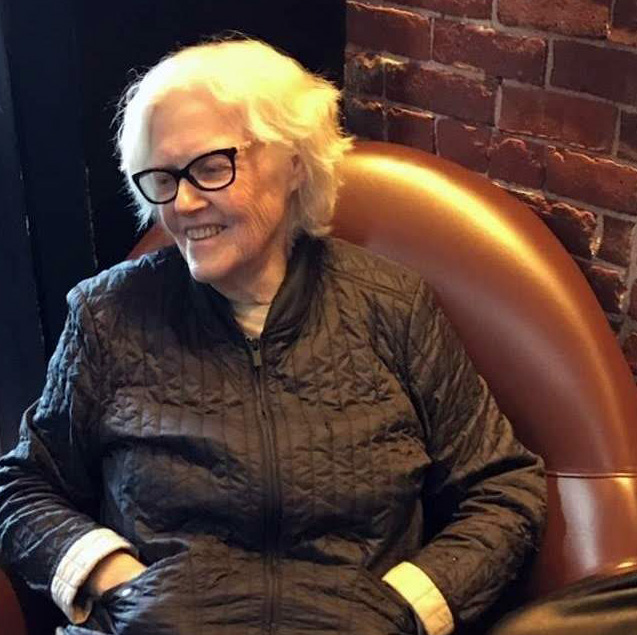Confectioner and abolitionist Polly Johnson (1784-1871) specialized in sweets and provided safe lodging to freedom seekers in New Bedford along the Underground Railroad. The Nathan and Polly Johnson House, her home with husband Nathan at 21 Seventh Street, became the first safe house of freedom seeker Frederick Douglass and his wife Anna. A business partner with her husband in confectionery and catering businesses, Polly worked hard so that freedom seekers could find “sweet freedom” in New Bedford.
Nineteenth-century confectioner and abolitionist Polly Johnson (1784-1871) specialized in sweets and provided safe lodging to freedom seekers in New Bedford along the Underground Railroad. Born Mary J. Mingo in 1784 in Fall River as a free Black to Ann and Isaac Mingo, she had at least one daughter from a first marriage before her second marriage in 1819 in New Bedford to Nathan Johnson. Nathan and Polly settled in New Bedford, where they initially worked for Charles W. Morgan and probably first lived in the Morgan home on Union Street.
While Polly and her daughter Rhoda Durfee worked for the Morgans, their wages were credited to Nathan’s account and were likely used toward the purchase of four properties on Seventh and Spring Streets. Polly then became a business partner with her husband in confectionery and catering businesses. By 1836, New Bedford’s wealthy families regularly purchased Polly’s confections and cakes for parties and weddings. Polly specialized in candy, cakes, and ice cream. Her confectionery shop at 23 Seventh Street sold such items as ginger snaps, candy sticks, Jackson Balls, John Brown’s Bullets, and spruce gum. Ever conscious of social justice, Polly’s confectionery shop sold “free labor candy” made from sugar grown on sugar plantations that employed free workers instead of the enslaved.
Polly was well-read on the social issues of the time and attended antislavery meetings regularly. The Nathan and Polly Johnson House, her longtime home with husband Nathan at 21 Seventh Street in New Bedford, became the first safe house of freedom seeker Frederick Douglass and his new wife Anna in 1838. Frederick and Anna Douglass had three children in New Bedford, where they lived for five years. When Polly’s husband left New Bedford in 1849 for the California Gold Rush, her hard work allowed her to keep their properties and to continue her abolitionist efforts. Polly provided safe lodging to at least one other freedom seeker while Nathan went west. New Bedford was a welcoming place for freedom seekers due in part to its tolerance of diversity and a spirit of equality in its maritime trades. It is estimated that during the 1850s, the population of Black freedom seekers in New Bedford ranged from 300 to 700.
The Nathan and Polly Johnson House has been recognized as a National Historic Landmark and is a site on the New Bedford Whaling National Historical Park’s Underground Railroad Tour. The house is now home to the New Bedford Historical Society, a community organization with a focus on the history of people of color in New Bedford. In partnership with the New Bedford Historical Society, the Garden Club of Buzzards Bay planned and planted the front garden of the Nathan and Polly Johnson House with plants grown in the mid-19th century that Polly may have used in her recipes. “Polly’s Herb Garden at the Johnson House” includes pears, quince, curly parsley, culinary sage, anise hyssop, feverfew, and Johnny Jump Ups, flowers that were candied in sugar syrup for cake and confectionery decoration. Through her confections and her abolitionism, Polly worked hard so that freedom seekers could find “sweet freedom” in New Bedford.
Learn more about Polly Johnson in this story, which is part of the digital exhibit Organizing New Bedford: Women Who Mobilized Change.
Ann O’Leary, Emily Bourne Research Fellow
Information from
-
“Aboard the Underground Railroad: Nathan and Mary Johnson Properties.” National Park Service, U.S. Department of the Interior. nps.gov, https://www.nps.gov/nr/travel/underground/ma6.htm.
-
Grover, Kathryn. The Fugitive’s Gibraltar: Escaping Slaves and Abolitionism in New Bedford, Massachusetts. U of Massachusetts P, 2001.
-
“Mary J. ‘Polly’ Johnson.” New Bedford Historical Society, http://nbhistoricalsociety.org/wp/?portfolio=mary-j-polly-johnson.
-
Thomas, Joseph D., et al., editors. “Frederick Douglass.” A Picture History of New Bedford, Volume One, 1602-1925. Spinner Publications, 2013, p. 60.
![[Polly Johnson], c. 19th century, Drawing (silhouette), Courtesy of New Bedford Historical Society Drawing of Polly Johnson - a silouette depicting the side of a woman's face](https://historicwomensouthcoast.org/wp-content/uploads/2018/05/Polly-Johnson-384x384.jpg)




